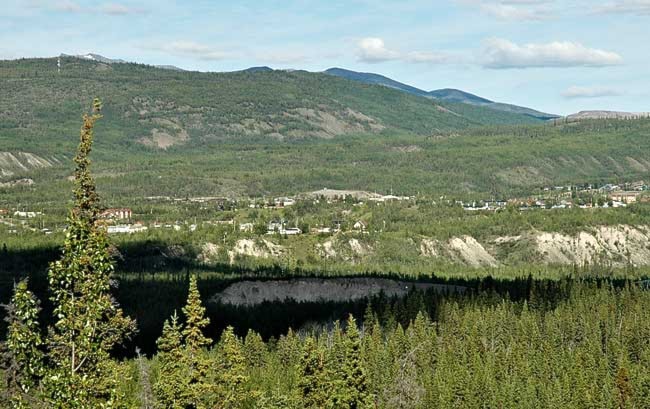It will take 45 years to seal Faro’s toxic tailings off from the rest of the world, making it one of the most expensive mine remediation projects in Canadian history.
Closing Faro’s tomb will cost over $450 million and require constant maintenance for at least 500 years.
These are the early figures from the Faro Mine Closure plan, now being prepared for an environmental assessment in the fall. Many details still have to be finalized, but this is the first time the daunting, multi-centennial task has been outlined in one coherent plan.
It won’t be easy burying the former lead zinc mine. The 25-square kilometer mess consists of 55 million tons of tailings, 320 million tons of waste rock and contaminated spill sites.
“Right now, we haven’t got the details of the design and specifications for all of the future, but what we do have is a single direction that we can take,” said Stephen Mead, the project’s senior manager.
The $3.5-billion Federal Contaminated Site Action Plan fund will be paying for the cleanup, and the project will only secure the funding once a finished plan is written over the next several years.
The project still has to get a water licence and undergo an environmental and socio-economic assessment. At the moment, the governments spends $7.2 million a year just to maintain the site.
The tailings impoundment must be constantly monitored for breaches. Currently, toxic dust from the tailings makes its way across the Rose Creek Valley whenever winds exceed 20 kilometers an hour.
The really expensive part will begin in 2013, when the Faro mine starts its very long closure.
The structures that will shut Faro off from the world will take 15 years to build and cost $30 million annually.
Dams and diversions on the site will be upgraded, and Faro’s old ore pits will be used to store sludge collected from the tailings.
The structures are being designed for the most dangerous weather possible to prevent a freak spill. It’s also being built to withstand the “biggest earthquakes we could possibly ever imagine,” said Mead.
The tailings will be covered with a metre-and-a-half cover of rock, soft till and soil. The tailing surface will eventually be re-vegetated.
The waste rock around the mine will be re-sloped to create a natural-looking landscape. The rocks will also be covered, depending on how dirty they are.
“(This period is) when we do all the heavy earth-moving,” said Mead. “It’s the big earthworks civil engineering event.”
Water will be treated throughout the construction phase and beyond.
“We’ll be treating water here for a long time, hundreds of years,” said Mead.
The average lifespan of a water-treatment plant is 20 years, meaning about five water-treatment plants will be built every century.
“There’s probably going to be a few built over time,” he said.
After the construction is finished, a 25-year adjustment phase will test the structure and repair any unforeseen problems. There isn’t much certainty that the first-shot structures will work perfectly.
“After we build it, we can’t just sit back and say, ‘Good job, guys,’” said Mead. “We have to test and monitor what we’ve done.”
Once the adjustment phase is finished, there’s the 500-year post-closure period, which will also require new water-treatments plants.
“We don’t have a walk-away solution for this site,” said Mead.
Not a cent will come from the companies that operated the Faro mine for over 30 years. The mine went through several closures throughout its lifetime. The last one was in 1998, when the Anvil Range Mining Corporation went bankrupt.
“The new policies now are that securities have to be put up against new mining developments,” said Mead. “There’s a lot more scrutiny now on the securities for closure.”
If a mine the size of Faro’s began on the day John Cabot set food in North America in 1497, we’d still be paying for it today.
“The estimate cost of this particular alternative is estimated to be between $450 and $590 million. That’s why it puts it quite high up on the Canadian list of environmental cleanups,” said Mead.
Final approval for the federal funding will be done after the regulatory process is finished. There are potentially seven other Type-2 contaminated sites in the Yukon that Ottawa could fund as well.
The Ross River Dena Council, Liard and Selkirk First Nations are working with federal and territorial planners on the Faro mine closure, allowing the communities to have a larger voice in the destiny of Faro’s tomb than before.
“We can go into Pelly and talk to elders from Selkirk First Nation and they understand what the issues are,” said Mead.
The 25-square kilometer toxic site will be their shared burden for generations to come.
Contact James Munson at
jamesm@yukon.news.com.
